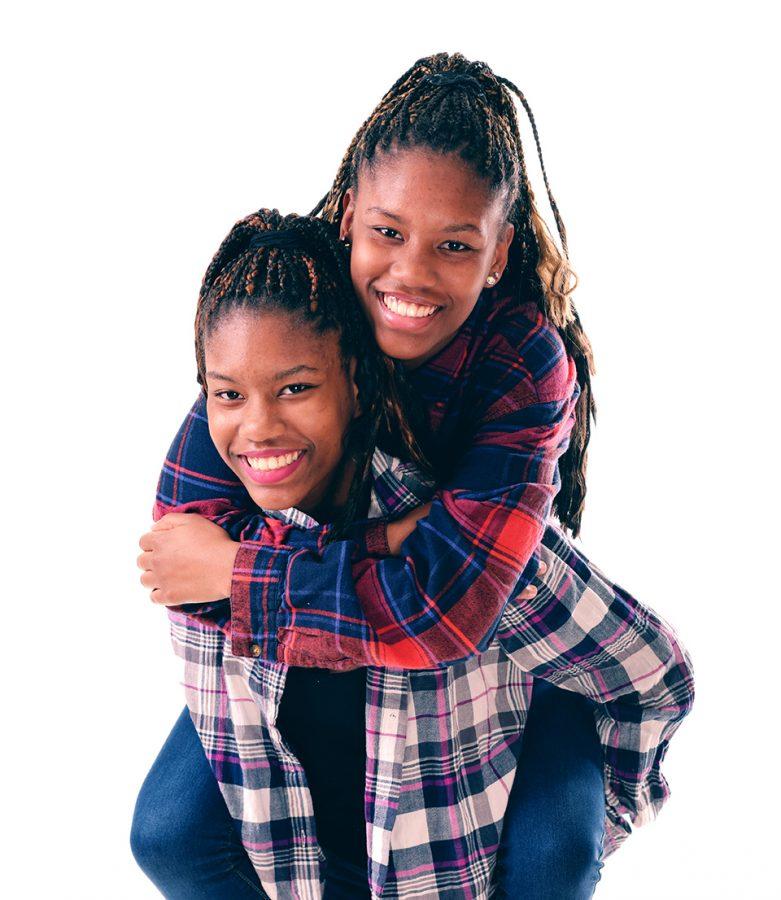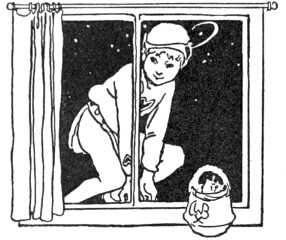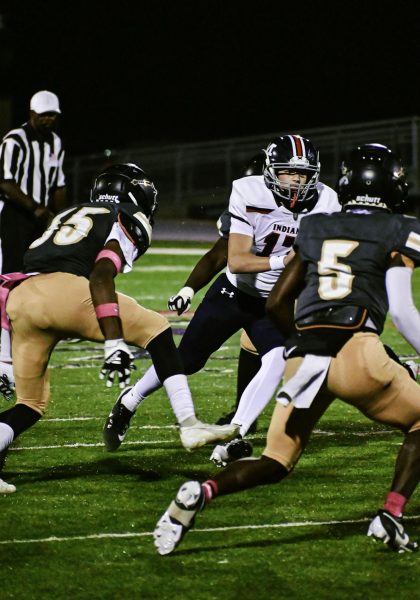The More The Merrier: Deja and Mya Mcfadden (continued)
Walking to room 103 to call Mya and Deja Macfadden, both seniors, out for this story, I try to sort out in my head how I am going to tell them apart. I hand the passes to AP Government teacher Dustin Rimmey, and he loudly shouts to the class, “If you’re a twin, go out into the hallway” obviously not attempting to distinguish between Deja and Mya. I sit them down and ask them right away, “Who is Deja and who is Mya?”
The beginning of the interview consists of the same questions the twins hear on a daily basis. “Who’s older? How do you feel being a twin? How many minutes apart are you?” are all examples of the frequently recurring interactions Deja and Mya deal with when someone finds out they are twins.
And while they understand that having a person who shares the same face comes with both positives and negatives, they concede, “I guess the most annoying thing is when people say ‘oh I’m seeing double’ I think it’s really corny to me. I get it, but it’s the most annoying to me.”
Sure they fight over all the same things as any other siblings: who gets the front seat, sharing clothes, and who is “in charge” but Deja and Mya are not your typical high school siblings. Born 11 minutes apart, Deja and Mya are identical twins. Meaning they both developed from a single egg the same genotype or genetic makeup.
“We switched classes in first grade on April Fool’s day. We got away with it because when we were younger we looked even more alike. We even fooled the teachers. We actually took the same math test and we got the same score and the same questions wrong.”
The two sisters “share everything” and have slept in the same bed for their entire lives. Deja says, “We have never not been attached. Even right now I’m wearing her shoes and her shirt.” Mya says, “I’m wearing her socks.”
And while having someone who looks identical to you has its obvious comical advantages, often times, Deja and Mya feel a need to assert their own uniqueness in group settings– a pressure that sometimes leads to tension between the sisters.
“We definitely try to talk louder than the other. We both have strong opinions and it’s who can get it out there first.” However, both agree the biggest source of tension is the difference in their ages. Deja, who is technically older than Mya by 11 minutes, contends,“I consider myself being older than her.” Mya retorts, “I tell her she is only older than me by 11 minutes. It’s not like you get to boss me around. We are the same age, born on the same day – those 11 minutes mean nothing to me.”The twins have similar interests, a similar friend group, enjoy the same foods and T.V. shows. As Deja puts it, “I guess the biggest difference is that we voice our opinions way differently. I try to be calm and think of my response and she [Mya] says what’s on her mind immediately.” Deja continues,“It’s little things that make a big difference between us.”
This statement is true of both differences in appearance and personality. Students who interact with them daily agree. Keaton Gage, senior and a friend of the twins, says,“There are little differences I look for. Like there is a scar on one of their cheeks. But other than that you just have to know.”
When asked how she tells them apart, Jayme Herman-Dye, senior, responded, “Now that I know them they definitely don’t look alike anymore– different tone of voice, different attitudes. Deja is more outwardly; she wears her emotions on her sleeve. While Mya is more laid-back.” In terms of differences in appearance, Jayme comments, “It used to be I could tell them apart because Mya wore a knee brace freshman year.”
When the twins were small, even their parents couldn’t tell the two apart. Deja says, “When we were little our mother had to dress us up in different colors or else she couldn’t tell us apart.” Then, when the sisters got older, their parents loved dressing them alike so they were forced to learn how to distinguish between the two. “We have different little spots around different things that you can look for. I have the same spot on my foot as my mom. So my parents would always say, ‘give me your foot.”











